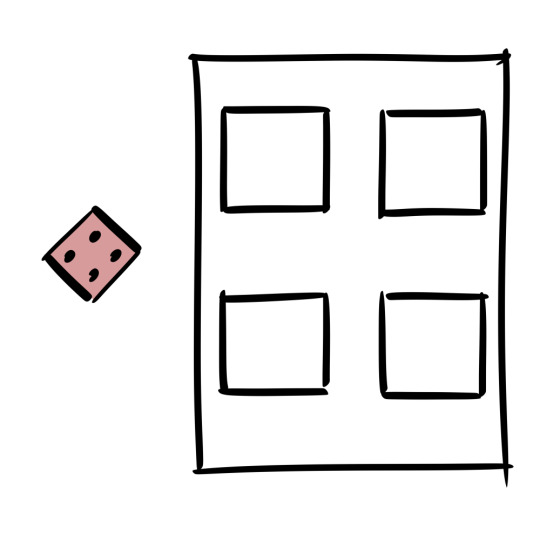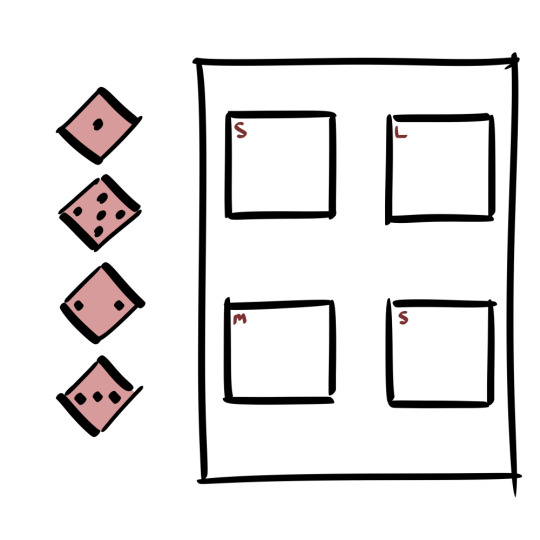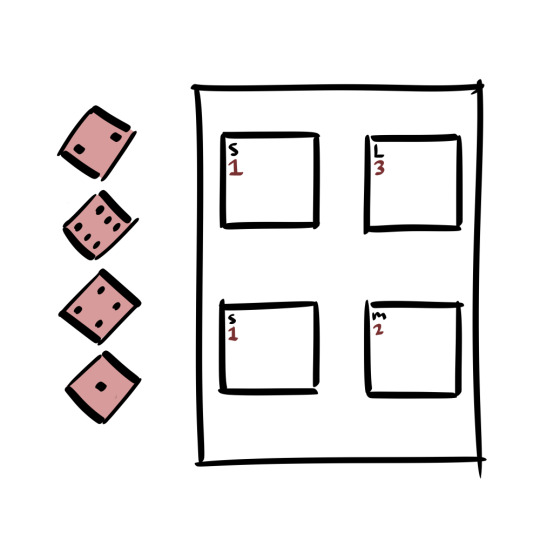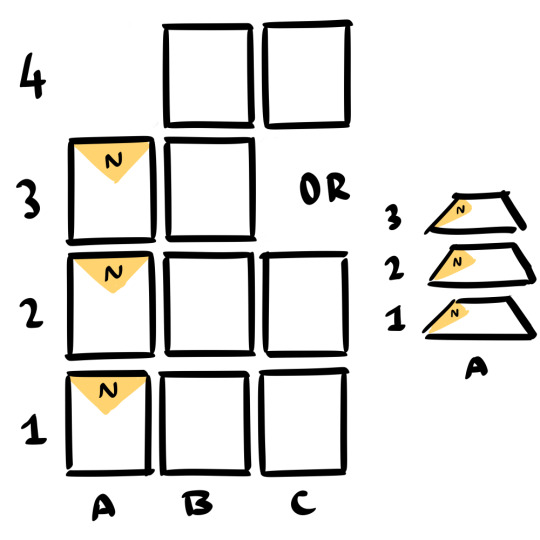#my idea of cyberpunk is clearly just adding a lot of straps to things
Text
DUNGEON CRAWLING ON A CYBERPUNK SKYLINE
You crawl through rubble filled hallways, climbing through a hole in the roof to find a dilapidated former apartment room. Or a hospital wing. Or a convenience store. Inside is a dirty, scraps-wearing man cradling a long dead skeleton. One of your friends tries talking to him of course but it goes badly.
The man picks up a shard of glass resting on a shattered digital photo frame. He attacks. You see whirring pistons beneath your broken skin but you don’t feel anything. The man’s legs disappear underneath a fallen pillar to the left of the room.
Another friend asks whether or not to move through the destroyed rooms to the left, following the man, or climb right up through the shaky vent above them. The first option is a lot safer but it’s going to take a while and time is money. Your wrist beeps and the device strapped to your arm reads ‘59 MINS POWER REMAINING’. The latter route is risky but looks a shorter trip.
A whirring sound hums louder and you can hear metal on metal echo throughout the room. It’s coming from the hole in the floor you just climbed up...

If you were to kneel at the great tree of Role Playing Game taxonomy, trace it’s many branches down and dig the dirt away, you’d unearth a root close to the surface: Dungeon Crawling.
With the resurgence of the old school mindset, the dungeon crawl has once again taken its place as both the bread and the butter.
But why do people keep going back to them? Well, they’re easy to run, right?. Simple in concept and in practice. The procedure for running the adventure is right there in your hands and it’s mostly fool proof.
Now I’ve learnt to love fantasy. But my first love was sci-fi. I adore cyberpunk and I’ve been hankering for a good cyberpunk game. I’ve also gotten right into the OSR as of late. So how do we reconcile cyberpunk and the OSR?
Dungeon crawling in an abandoned Judge Dredd-esque freaking mega-block skyscraper.

A structure so large it could have once held the equivalent to an entire city’s population.
Think combing the ruins of an older world ala Fallout or wading through a dangerous, falling apart high-rise that’s leaning on another in the Last of Us. The real life urban exploration explosion comes to mind as well.
This will be the first of a series of posts about hacking up this sort of game for my play group.

Now it doesn’t take long into thinking about the logistics of running an underdark-like campaign in a vertical plane that things start falling apart. Nearly all underdark maps I’ve seen are hex crawls. Veins of the Earth is a considerably impressive manual depicting procedures for replicating labyrinthian cave systems in both planes. But its macro layout is still mostly horizontally distributed.
So the chief obstacle is how to manage a map that makes the y axis a central pillar of its design while still maintaining clear, minimal note taking that’s easy to use at the table.
This is what I came up with.
Grab an index card. This is going to be one Block in the larger city building structure. Each Block has a number of Rooms that are still intact enough that something is or has recently been there.
Roll a D6 to determine how many Rooms are in the Block.
Any position is fine. The map is mostly conceptual rather than literal. A simple method is to place them on the card in the arrangement of dots on the dice.

Not all rooms are the same so let’s differentiate them a bit and add a little variety. Remember to do everything at the same step, working clockwise before moving on. So determine the size of all the rooms before heading to the next instruction. Do this for all of the following steps. I found it’s quick and easy to have a pencil in one hand and the dice in the other.
Roll a D6 to determine how big the rooms are.
1-2: Small or one room.
3-4: Medium or 2-3 small rooms
5-6: Large or 4-6 small rooms or 2 medium rooms
Marked with a S, M or L respectively.

Remember we want verticality to permeate all of the map design so there’ll be 3 levels within each card.
Roll a D6 to determine which rooms are in which levels of the block
1-2: Level 1 or the lowest level
3-4: Level 2 or the mid-tier level
5-6: Level 3 or the highest level
Note this by writing the Level number next to the size

Now we’ve got our rooms, let’s determine some of the connective tissue. Routes link the rooms together and are the ‘gutters’ to our ‘panels’.
Let’s take a little time to clearly define Rooms and Route, and what this means at the table. During play Rooms are ‘Zoomed in’. We play through this portion of the fiction in a moment to moment basis, seeing all the nitty gritty details.
Routes on the other hand are ‘Zoomed out’. We gloss over the journey a lot of the time in stories and role playing games because it’s usually not the particularly exciting part of the games. Here we’re working at an hour to hour basis compared to moment to moment. That is unless there’s something interesting for the players to interact with. Then we Zoom In. This could be a risky climb for instance. Rooms have specific interactive encounters. Interesting things happen in them, compared to Routes where there usually isn’t anything interactive. Routes could be hallways or a number of actual rooms. But since they’re rooms with nothing inside them worth the players’ time then we don’t zoom in.
This sort of concept is important to understand if you notice you get a lot of blank stares and awkward dead air after you tell them things about the fiction. You’re probably not giving them enough of a cue of something for them to interact with and respond to. The game is like a conversation in this way. I used to do this all the time when I first started GMing. The players would tell me they move through the tunnel. And then I’d respond with a detail of some sort about how the tunnel looks and smells like and how it extends onwards and then cue the awkward silence. They’d ask me if they come across anything and I’d skip to where they came across something important and interactive like an encounter.
Skip to the good stuff.
Draw some lines between a few rooms. These are our Routes. Then let’s determine how they connect. No rolling here, just look at the levels of the two rooms you’re trying to connect.
The Route is:
Horizontal if the two rooms are on the same level
Slope (~45*) if they’re a level apart. This has a +1 Dice Modifier for when the players roll to see how long the passage takes to traverse.
Vertical (~90*) if they’re two or more levels apart. This has a +2 Dice Modifier.
Next is how, in general, the Route is structured.
1-2: Walkway. Large enough in diameter to make your way through without any squeeze.
3-4: Crawl. Hands and knees territory. This has a +1 Dice Modifier
5-6: Squeeze. Walls up against you. You almost have to stay calm in order to even fit. This has a +2 Dice Modifier.
Write W, C or S along the line representing the route.

This is your basic Block.
Let’s talk about Time in a little more detail. Each Route is a point of decision making. Do the players travel down it or find another path? Time eats away at resources. Time is important in time-sensitive situations. And it's an important factor in creating tension in your OSR games. When the players traverse a Route have them roll a D6, adding any modifiers for the route. Each result equals that many 10 minute increments. On a 6, the die explodes and another D6 is rolled, adding any remaining modifiers. Tracking time through the use of PbtA/Blades style Clocks with six 10 minute sections I can fill in.
If your players want to find another route not on your card to a room on or not on your card then they can roll to determine how long it takes for them to find it. The building is a maze of cracks and crevices, and since we don’t want the players to be wasting their time they’ll always find the passageway. Usually they’ll probably want to skip a dangerous vertical climb by breaking it up into a longer Slope or maybe they’re just looking for a random room off the beaten path. If they are roll one up quickly and mark the new Route as a dotted line.
There are a few rules that are important in order to maintain verisimilitude. The time it takes to climb up a Route is twice as long than it is climbing down. The time it takes to travel through a Route is halved if it has already been traversed
Once you’ve got your Block repeat this process a couple of times and then arrange them like this.

This is your building (or part of it). This setup is conceptually the same as stacking cards of the same letter on top of each other with the higher number on top.
The highlighted areas of the cards are all areas that are on top each other, either directly below or above.
To the right is the concept from a different angle. The North area of Block A1 is right under the North Area of Block A2. If the players were in a Level 3 Room in the North area of A1 they could travel through a Slope Passage to a Level 1 Room in the North area of A2.
Simply draw any routes between the cards/blocks, connecting them. I’ve found when I use this method at the table I can hold the cards around them like a hand in poker, but when I’m playing a game of Discord I have no problem laying out the relevant cards in the way drawn above. How many you want to place down entirely depends on how many you want to generate at a time. Think the limited view distance in old video games popping objects up or having them vanish.
You could probably use this for running a crawl through castle ruins in your classic fantasy campaign too. Or a dungeon that goes straight down.
In further posts we’ll talk about what players will find in these rooms, how to structure an encounter within this framework and the idea of Power as both the amount of light remaining and fuel for chainsaws and laser weapons. Also monsters.
All images copyright 2018 Chris Wood Ink.
1 note
·
View note